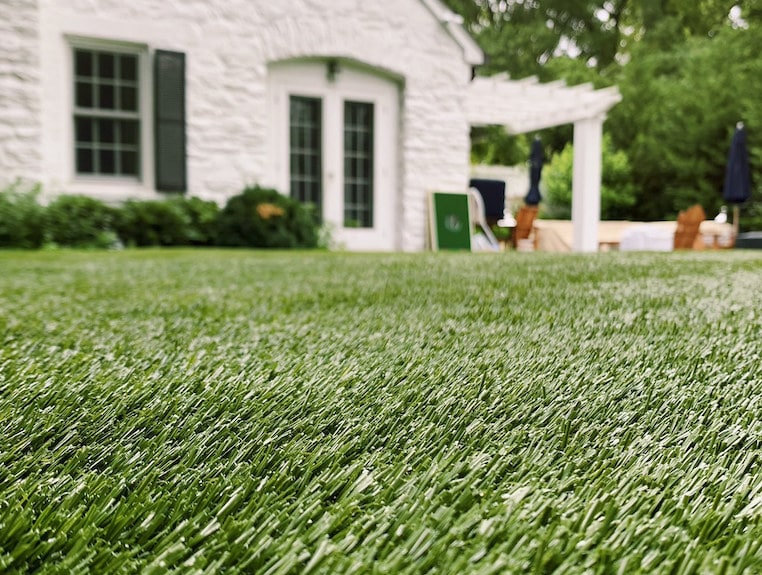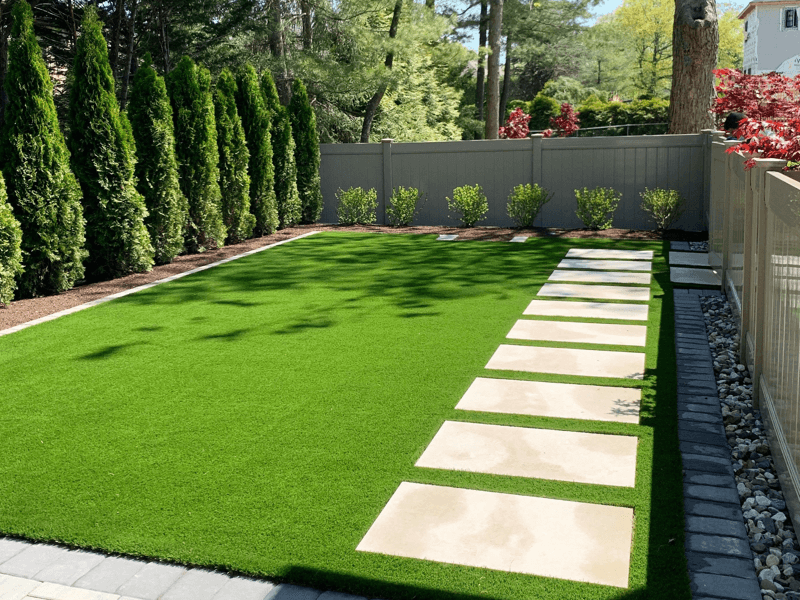Delve Into the Environmental Benefits of Opting for Artificial Turf Solutions
The adoption of artificial grass options provides an engaging opportunity to resolve pressing environmental challenges. By dramatically minimizing water use and lessening the application of dangerous chemicals, these choices not only promote lasting landscaping yet additionally safeguard local ecosystems.
Water Conservation Perks
One of the most significant advantages of man-made lawn is its ability to save water. Standard turf yards need significant irrigation, specifically in locations vulnerable to drought or water constraints. On the other hand, fabricated turf does not need watering, dramatically lowering the overall demand for water resources. This function is especially beneficial in deserts where water scarcity is a pressing problem.
By removing the need for routine watering, artificial grass adds to sustainable landscape practices and assists mitigate the ecological effect of too much water usage. The preservation of water expands to the decrease of overflow, which can lead to dirt disintegration and river air pollution.
In addition, the setup of fabricated lawn enables communities and homeowners to assign water resources more efficiently, concentrating on essential usages such as drinking water and agriculture. The shift towards man-made grass not only advertises responsible water usage however likewise straightens with more comprehensive environmental objectives targeted at protecting natural deposits.
As communities significantly focus on sustainability, the water preservation advantages of man-made turf present an engaging instance for its fostering in residential and business landscape design tasks.
Minimized Chemical Use
The shift to synthetic grass substantially decreases the dependence on chemical therapies commonly used in all-natural yard upkeep. Traditional turf management generally entails the application of herbicides, fertilizers, and chemicals to promote growth and control pests. These chemicals can posture risks to human health, neighborhood wild animals, and the setting, adding to dirt and water contamination.
On the other hand, synthetic grass removes the need for these hazardous compounds. Once mounted, it calls for very little maintenance, largely containing routine cleaning and infrequent infill replenishment. This decrease in chemical use not just benefits the prompt environment but likewise adds to broader ecological stability. By minimizing the launch of artificial compounds into the ecosystem, artificial turf advertises much healthier soil and water supply.
Furthermore, the lack of chemical drainage linked with synthetic grass setups aids protect neighborhood rivers from pollution, sustaining water life and maintaining biodiversity. Arizona artificial turf. As neighborhoods significantly focus on sustainable practices, deciding for synthetic grass offers a practical remedy that lines up with ecological preservation goals. Via this change, homeowner can delight in rich green rooms without jeopardizing environmental health and wellness, leading the method for a much more lasting future
Lower Carbon Footprint

Moreover, the installation of synthetic grass can cause substantial water preservation. Natural grass call for considerable amounts of water for irrigation, which not only contributes to the carbon impact connected with water removal and treatment but also strains local water resources. In contrast, artificial grass requires very little maintenance, requiring no watering, therefore substantially minimizing water use and its connected power expenses.
Furthermore, the long life of man-made lawn adds to its decreased carbon influence. With a life-span of approximately 15 years or more, the demand for regular replacements is reduced, leading to much less waste and reduced energy usage in manufacturing and getting rid of traditional grass alternatives. Overall, synthetic grass presents a sustainable choice for ecologically aware landscape design.
Environment Preservation
Habitat conservation is a vital consideration in the argument over landscaping choices, particularly when comparing synthetic grass to all-natural turf. Natural lawn lawns usually require extensive upkeep, consisting of using pesticides, plant foods, and herbicides, which can detrimentally impact local ecological communities. These chemicals can leach right into the dirt and rivers, damaging indigenous plants and fauna and interrupting regional habitats.
In contrast, synthetic grass provides an opportunity to minimize the environmental footprint of landscape design. By choosing artificial turf, property owners can minimize the interruption of all-natural habitats associated with traditional yard treatment techniques. Synthetic lawn gets rid of the demand for hazardous chemicals, therefore protecting nearby wildlife and keeping the stability of surrounding environments. The installation of artificial lawn can lead to the conversion of former grass locations right into even more biodiverse landscapes, such as pollinator gardens or native plant locations, which can support local additional reading wild animals.
Eventually, the change to synthetic grass not only saves water and reduces maintenance efforts yet click for more likewise promotes an extra unified connection in between human activities and the native environment, promoting environment preservation while doing so.
Long-Term Sustainability
Long-term sustainability is a crucial aspect in assessing the benefits of artificial turf over typical yard yards. Among the most significant advantages of synthetic grass is its toughness; it can last as much as 15-20 years with marginal maintenance, whereas natural turf needs constant reseeding and replacement. This long life lowers the requirement for consistent sources, such as water, fertilizers, and chemicals, which are necessary for keeping a healthy and balanced turf yard.
In addition, synthetic grass adds to a reduction in carbon exhausts connected with grass care devices. Conventional yards usually need gas-powered mowers, leaners, and blowers, all of which contribute to air pollution. Turf installation phoenix az. In comparison, artificial turf removes the need for such tools, promoting a cleaner setting
In addition, the production of synthetic grass significantly makes use of recycled products, enhancing its sustainability account. As makers adopt environment-friendly practices, the environmental footprint of artificial turf proceeds to decrease.

Verdict
The adoption of synthetic grass services presents considerable environmental advantages, consisting of substantial water conservation, decreased reliance on dangerous chemicals, and a reduced carbon impact. Fabricated grass help in preserving natural habitats by lessening land disruption and advertising long-lasting sustainability through the use of resilient products. Collectively, these variables underscore the possibility of synthetic lawn to contribute favorably to environmental health and use a sensible choice to traditional landscape design practices in a significantly resource-conscious globe.
In comparison, artificial turf does not need watering, dramatically minimizing the overall demand for water resources. By decreasing the release of Continued artificial substances into the ecological community, synthetic lawn advertises much healthier soil and water systems.
In addition, the installment of fabricated turf can result in considerable water conservation. In contrast, fabricated lawn needs minimal upkeep, needing no watering, thus considerably lowering water usage and its connected energy prices.
